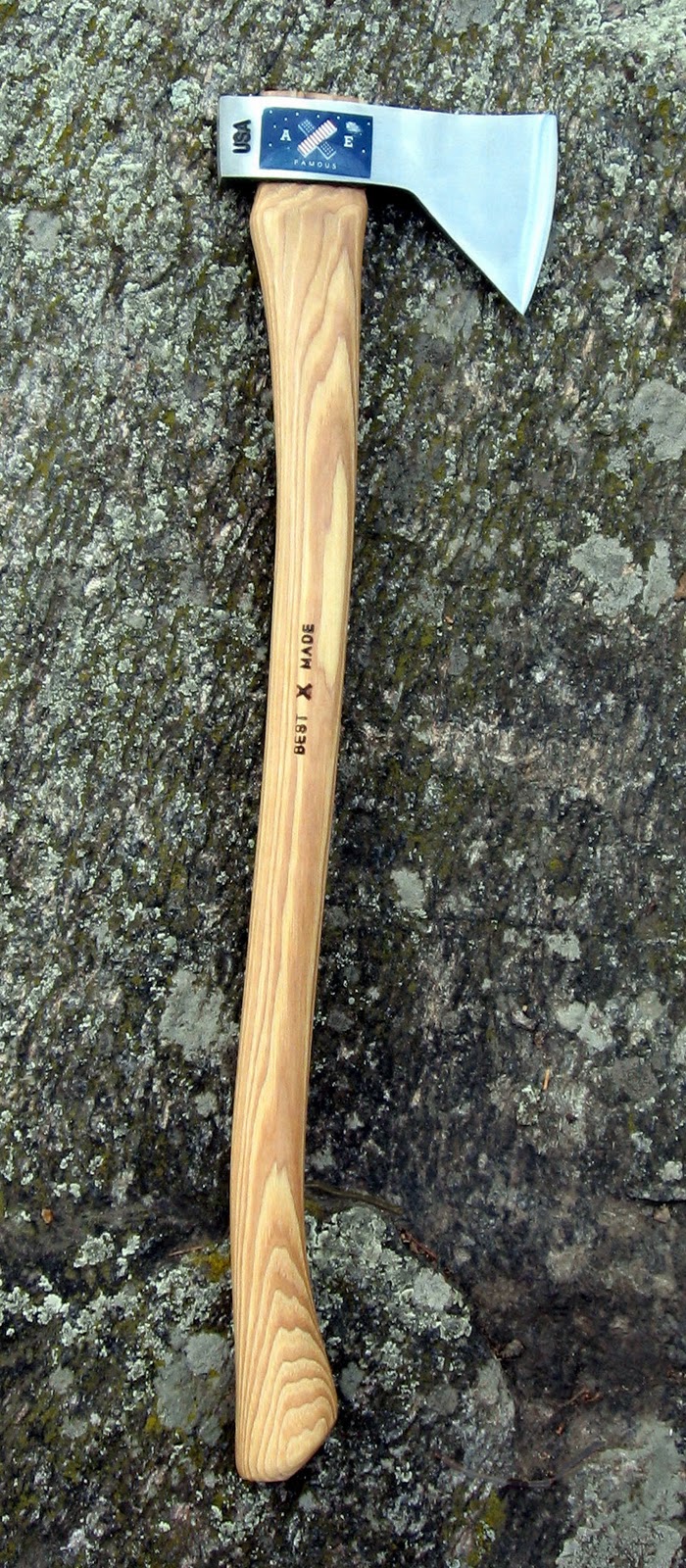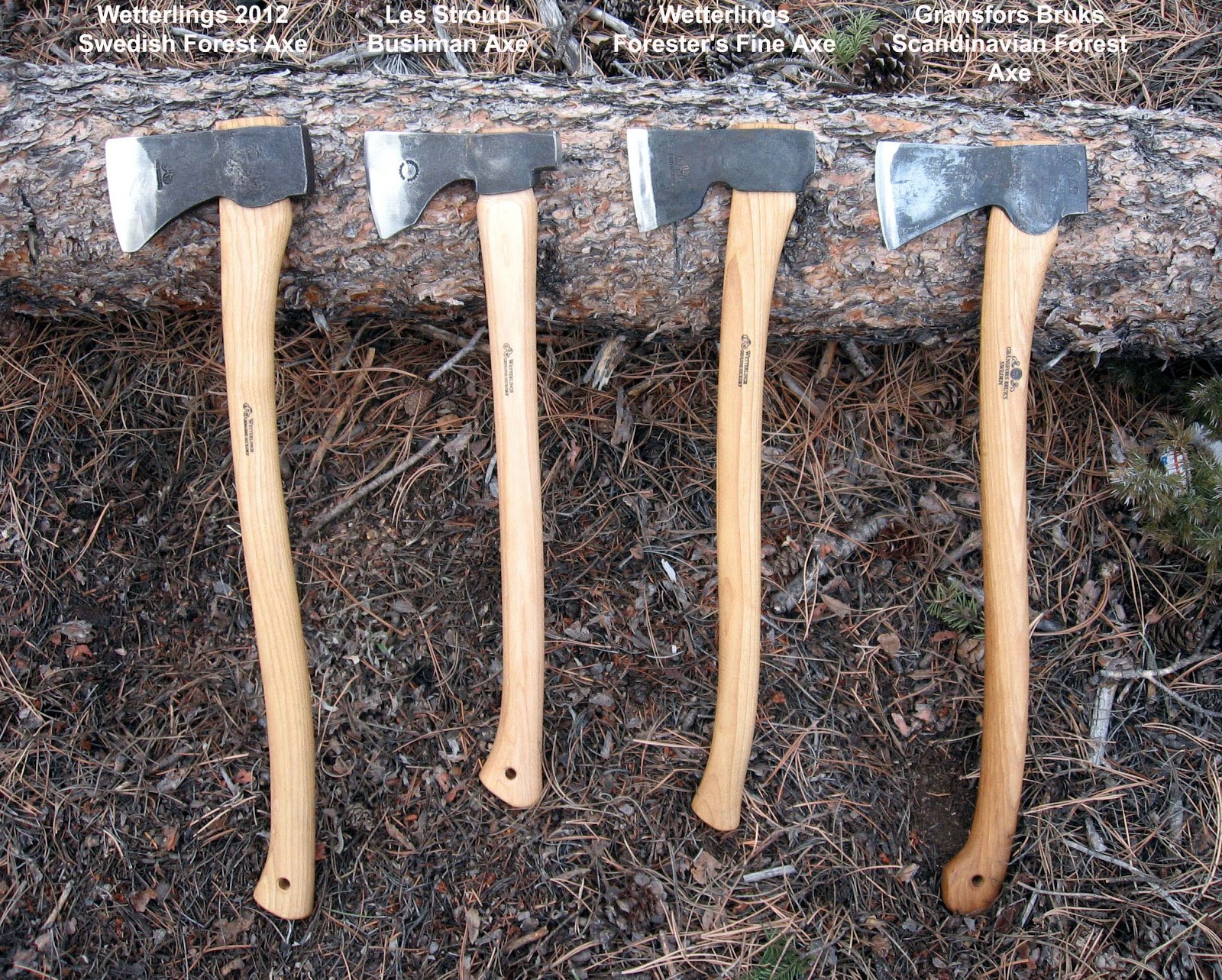I'm withdrawing safety as a topic. I take seriously everyone's counsel about safety, but I consider it a matter of learned technique not something inherent to the tool. Whatever the size or length, I'm confident I can learn safe techniques.
As to length, I'm zeroing in on what I see called 3/4 axes or boys axes: about 24"-28".
As to shape, I like the Hudson Bay shape or other shapes that let you get your hand behind the center of the blade when you choke up.
As to weight, I was in the hardware store today buying traction sand for my glacier . . . er, driveway . . . and looked at some axes. I wouldn't want a
head weight more than 2.25 lbs. for canoe camping uses.
As to aesthetic historical and canoe-related appeal, I like this 27"
Ebay used Collins Legitimus (?) axe in a sort of Hudson Bay head shape, which is of unlisted weight and has no mask. It's about 30 miles from me in Canton/Collinsville, which is the site of the original Collins factory and also Connecticut's biggest canoe store. All sorts of aesthetic connections for me.
As to aesthetic visual and patriotic appeal, I like this 2.0 lb. head, 26" Best Made Hudson Bay axe, which is actually MADE IN THE USA by Council Tool.
Other current candidates are the axes in this picture, which I posted earlier.
The least expensive wood-handled candidate of all the axes pictured in this post is the 2.0 lb. head, 26" Husqvarna Forest Axe, which is currently made in Sweden by Hultafors. Before 2012 it was made by Wetterlings and called the Husqvarna Multi-Purpose Axe. Here it is in between the Best Made Hudson Bay Axe and the 2.31 lb., 23.5" Fiskars X15, which is also a candidate and the least expensive axe of all.
The Fiskars also now comes in a 28" all black version called the 28 Chopping Axe, which has the same 2.31 lb. head as the X15 and which is the second least expensive of the axes in this post.
According to the Rocky Mountain Bushcraft blog,
the Fiskars X15 "blew away" all the Swedish and German axes in their suite of performance tests, and the
Fiskars 28 Chopping Axe out-chopped the X15. The two Fiskars axes are little heavier than my 2.25 lb. cutoff for head weight, and I'm not sure about their balance with those hollow composite handles. There is probably little doubt they are the best splitters of all the candidate axes in this post.



